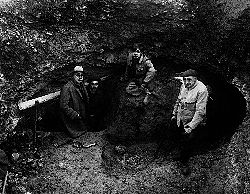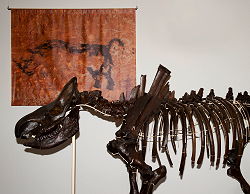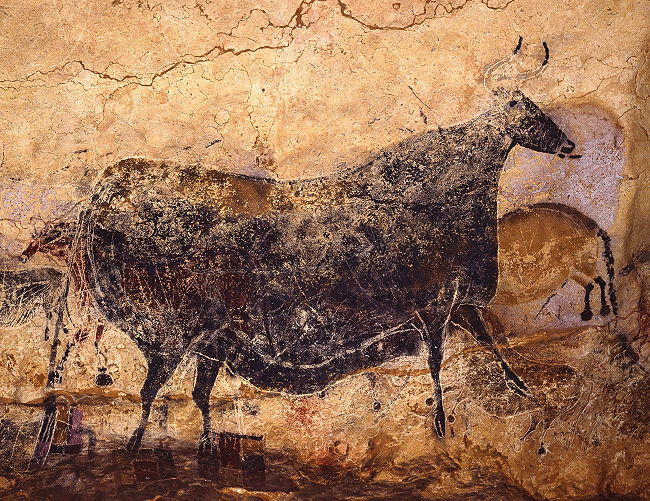September 1940 in the Dordogne, France. Four boys penetrated further into the hillside cavity to which they had gained entry. To their amazement, they discovered an extensive cave with decorated walls. It rapidly became apparent that they had made one of the most fascinating archaeological discoveries of the twentieth century. Shortly thereafter began a stream of visitors running into the hundreds of thousands.
 © Lascaux International Exhibition
A good 900 animals are pictured, including aurochs, deer, horses and bison. There is also an enigmatic depiction of a human being. The paintings of Lascaux were made with mineral pigments and without any organic matter. Consequently it is impossible to know their age directly through the carbon-14 method. So, to date them, specialists took the objects in organic matter, found in the grotto. The first dates reached in 1959 cover a span between 11,500 and 17,000 years. More recently, between 1990 and 2000, new tests were run on objects in reindeer bone and wood. Mass spectrometry, by far more precise, was used and the material was considered to be circa 19,000 years old, which means it dates from the Solutrean era.
An impressive reproduction
In order to protect the cave and particularly the rock art for future generations, the site was closed to the public in 1963. Fortunately, full-scale copies of these works of art have been made at regular intervals, thereby enabling the public to continue to enjoy this splendour. In the years after the turn of the millennium, a new technology was patented, a 'stone veil'. Now portions of walls can be reproduced and are identical to the original. The great advantage is that they are light enough to travel around the world. The most recent series of reproductions are being displayed in the Cinquantenaire Museum in Brussels from 14 November 2014 on. Lascaux is an exhibition directed chiefly towards families and in 2013 was chosen as ‘Touring Exhibition of the Year’, enjoying enormous success in the United States and Canada.
 Woolly Rhinoceros © Museum of Natural Sciences.
Full-scale, scientifically accurate reproductions and the most up-to-date visual technologies give the visitor the impression of actually being in the cave itself. The exhibition also pays attention to the cultural context within which this art originated, showing how its creators lived, hunted, ate and clothed themselves. Serving to frame the whole are complete animal skeletons and bone fragments, a realistic portrayal of a baby mammoth, and contemporary implements and jewellery, drawn from the Museum of Natural Sciences and the Cinquantenaire Museum.
To see other illustrations, click on Version Française, at the top of the page
| 









